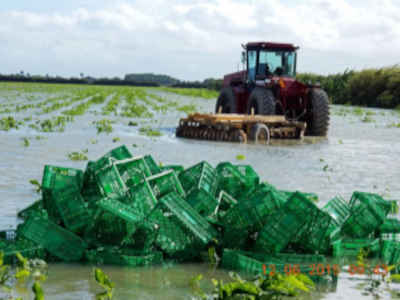By Pam Knox
A recent article in Vegetable and Specialty Crop News pointed out that recent rain of up to 3 inches in southern Florida have caused the muck soils there to hold water like a sponge. The effects on plants include stand loss and increased diseases on lettuce and beans. Fortunately, the weather for the next week looks pretty dry, which will help fields to lose some water. You can read more at https://vscnews.com/florida-increased-rainfall-producers/.

Torrential rains in south Florida’s Redlands growing region severely damaged winter yellow squash, zucchini and green beans, as well as this field of corn grown by Alger Farms.
Source : uga.edu